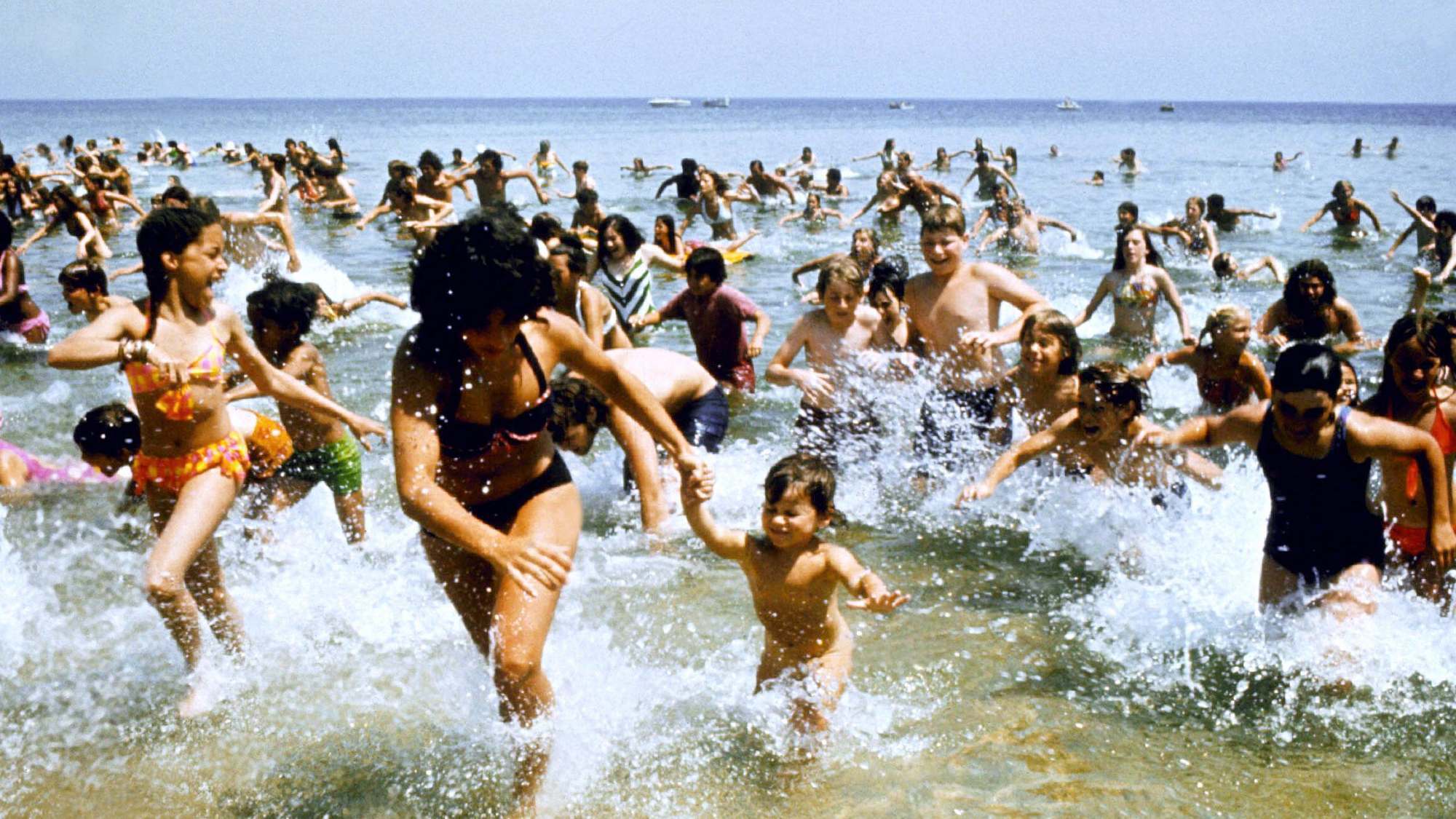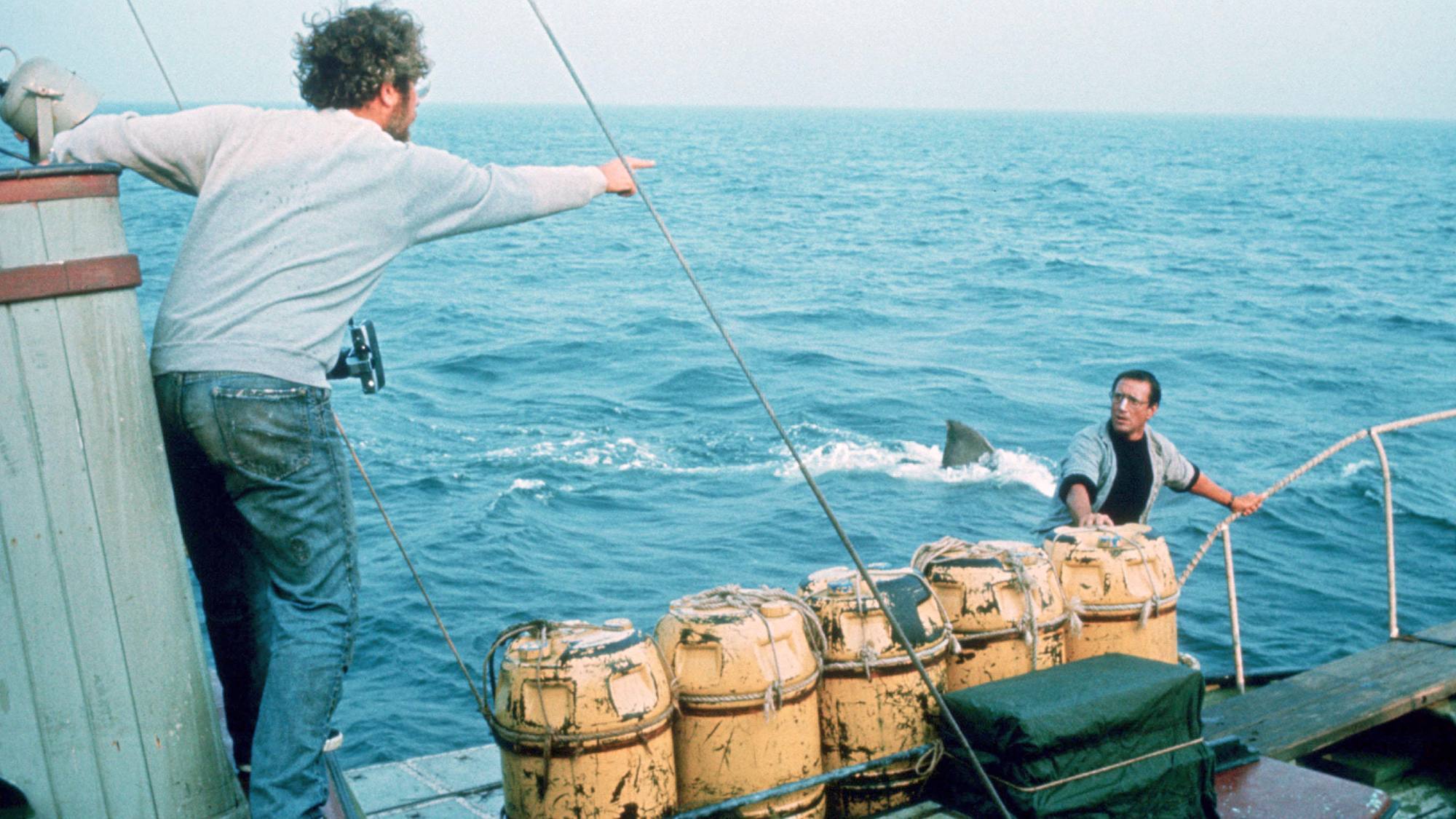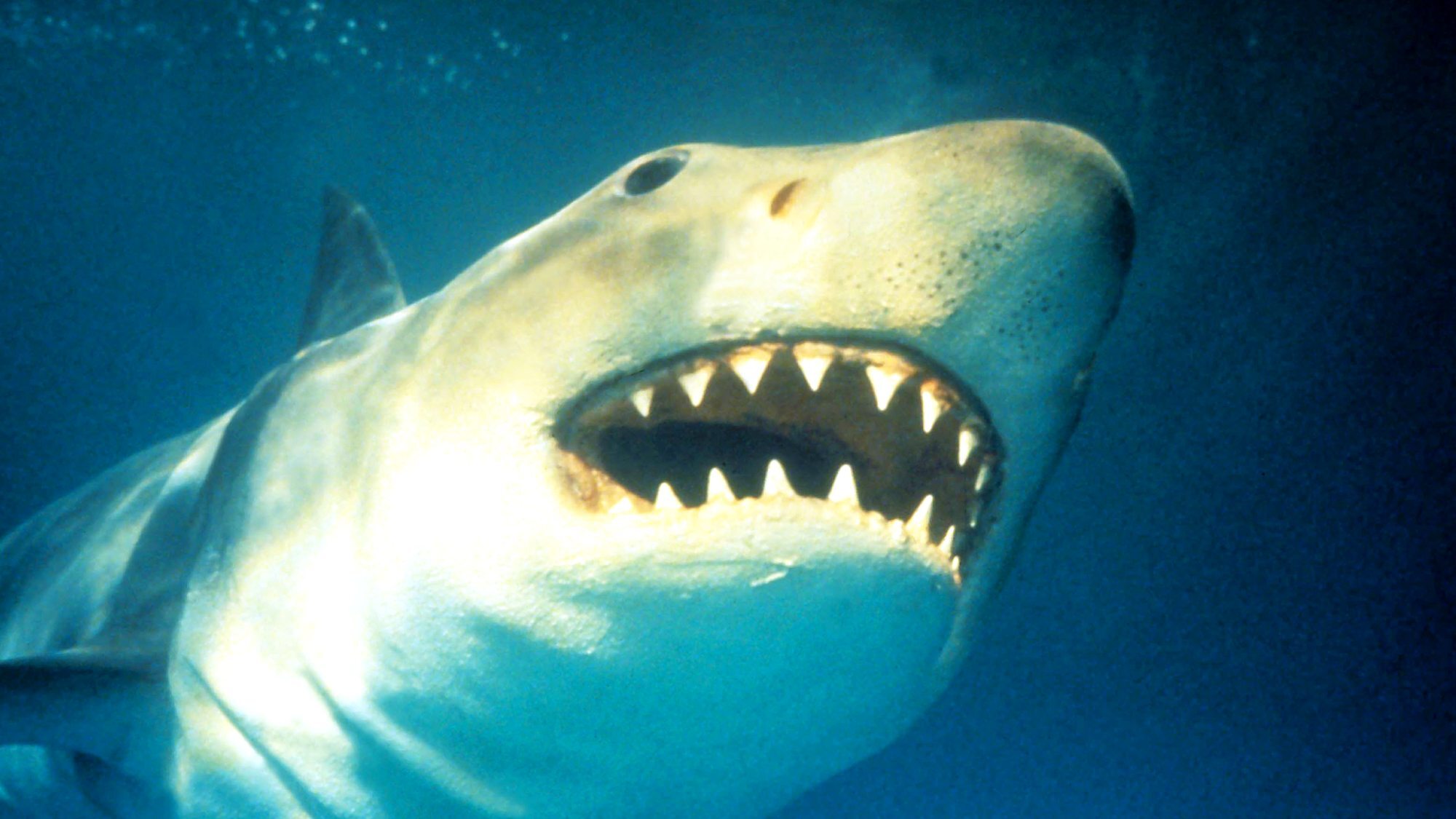
The Fourth of July — fireworks, hot dogs and ... sharks? While many of us will be barbequing in the backyard and watching fireworks, consider setting aside some time to watch “Jaws,” the landmark thriller by Steven Spielberg.
As “Jaws” approaches its 50th anniversary in 2025, its impact on Hollywood cannot be overstated. There is life before “Jaws” and life after “Jaws.” From its revolutionary marketing campaign and groundbreaking release strategy to its troubled production and high-concept premise, the history behind “Jaws” has almost surpassed the film itself. I say “almost” because Spielberg’s shark adventure remains a masterpiece.
Though released in June, “Jaws” is the quintessential Fourth of July movie. The film features a summer setting in the picturesque New England beach town of Amity Island. One of the pivotal shark attacks occurs during the July 4 weekend. The decision to open the beaches despite the presence of a killer shark is eerily similar to present-day dilemmas faced by governments in a post-Covid world.
Politics aside, “Jaws” is the ideal blockbuster — invigorating action, an easy-to-follow story, distinct characters, and an exhilarating ending. Good luck finding a better movie to watch on the Fourth of July.
‘Jaws’ is a masterclass in suspense
If you’ve never seen “Jaws,” here’s the synopsis: After a shark kills a young woman, police chief Martin Brody (Roy Scheider) closes the beaches of the small New England town. The attacks continue, but Mayor Larry Vaughn (Murray Hamilton) insists on opening the beaches to boost the town’s economy, which relies on tourism. Another attack leads to more pleas from Brody to Vaughn, asking to keep the town's citizens out of the water. Finally, Vaughn pairs Quint (Robert Shaw), a grizzled shark hunter, and Matt Hooper (Richard Dreyfus), an oceanographer, with Brody to hunt the shark at sea.
From the opening moments of “Jaws,” Spielberg is teaching a masterclass on suspense. The first scene, featuring a woman named Chrissie (Susan Backline) skinny-dipping in the ocean, sets the tone for what’s to follow — a great white shark is on the hunt, and humans are the prey.
Backed by John Williams’s iconic score, Spielberg never shows the shark in the opening scene. All you see is Chrissie’s body jerking back and forth repeatedly as the shark bites into her legs. Her screams are deafening, yet no one can save her. If that scene doesn’t grab your attention, check your pulse because you might be dead.
One of Spielberg’s greatest strengths is patience. The Oscar-winning filmmaker does not reveal the full view of the shark for the first 80 minutes of the movie. Part of this is attributed to the mechanical sharks malfunctioning, leading to significant delays (more on that later). However, Spielberg turns this weakness into a strength by relying on his characters, storytelling, and music over showing the shark. Spielberg later implemented this philosophy in his treatment of the T-rex in "Jurassic Park." When Williams’s “Dun-Dun” hits, the hair on your arm sticks up because the shark is coming. It’s a simple but effective way to instill fear and existential dread.
The action moves to open water in the second half of “Jaws,” as the movie becomes a three-hander with Brody, Hooper, and Quint. It’s man vs. beast. No one is coming to save them. I imagine Ridley Scott pointed at the trio’s hunt for his famous “Jaws in Space” pitch for “Alien.” The pursuit of the shark showcases masculinity in its many forms. Quint is bleeding with machismo, calling the shots while refusing to take any advice. Hooper is the know-it-all, believing his intelligence elevates his societal status. Then there’s Brody, the family man caught between Quint and Hooper.

These three distinct personalities are constantly in a battle of egos on the claustrophobic boat. It’s a stroke of genius by Spielberg to give Brody, the least experienced member of the trio, the hero’s journey. Quint, the hunter, falls victim to the shark. Brody, the genius, hides from the shark when his plan fails. But Brody, the man who hates water, is the one to save the day.
Troubled production adds to the film’s legacy
Calling “Jaws” a troubled production doesn’t do it justice. By all accounts, it was a catastrophe. Spielberg, a young filmmaker in his late 20s during production, chose to film in the ocean instead of a tank, a costly decision he later blamed on his naivete. The mechanical shark broke down constantly, forcing Spielberg to apply creative solutions to feature the shark, like using yellow barrels during most of the chase sequences. These ideas wound up enhancing, not hurting, "Jaws."
Originally budgeted at $4 million, “Jaws” ballooned to $9 million. Principal photography was scheduled for two months. It ended up lasting 159 days. The sea of problems led to the film’s nickname, “Flaws.” To make matters worse, Dreyfuss and Shaw feuded throughout production, leading to real on-set tension. Spielberg was nearly fired multiple times.
Frankly, it’s a miracle that “Jaws” became the unimpeachable classic that has stood the test of time. Audiences will be able to learn more about the notorious production next year thanks to two documentaries, “Jaws: Making a Splash in Hollywood” and “Jaws @ 50,” the latter of which involves Spielberg’s Amblin Entertainment.
'Jaws' became the blueprint for blockbusters going forward

In today’s Hollywood, the summer blockbuster season is arguably the biggest stretch of the year for major studios. From the first Friday in May through Labor Day weekend, studios will pack the schedule with tentpole franchises, sequels, and event films in hopes of generating a smash hit with huge profits.
That wasn’t the case before “Jaws.” Summer was a dead zone for the movies, as studios believed attendees did not want to spend the warm months inside. The summer used to be “dump-uary,” the time of year when studios released films likely to fail, which now happens in January.
Spielberg and “Jaws” wrote the blueprints for how to market and release a summer blockbuster. Universal spent a significant amount of money (around $2 million) on marketing, including expensive television spots set to Williams’s menacing score, which emphasized the film’s high stakes and teased the thrills that would soon follow. Merchandise — T-shirts, posters, toys, games, etc. — was released in the build-up to the film.
Establishing this connection with the audience beforehand helped “Jaws” become the highest-grossing film of 1975. Adjusted for inflation, “Jaws” ranks seventh all-time in lifetime gross. More importantly, “Jaws” proved films could be critically acclaimed and have commercial appeal. “Jaws” won three Oscars and became the highest-grossing film ever until 1977’s “Star Wars.”
So when you’re picking a movie to watch on the 4th of July, there’s only one answer: “Jaws.” Remember: “It’s only an island if you look at it from the water.”



!["[T]he First and Fifth Amendments Require ICE to Provide Information About the Whereabouts of a Detained Person"](https://images.inkl.com/s3/publisher/cover/212/reason-cover.png?w=600)



